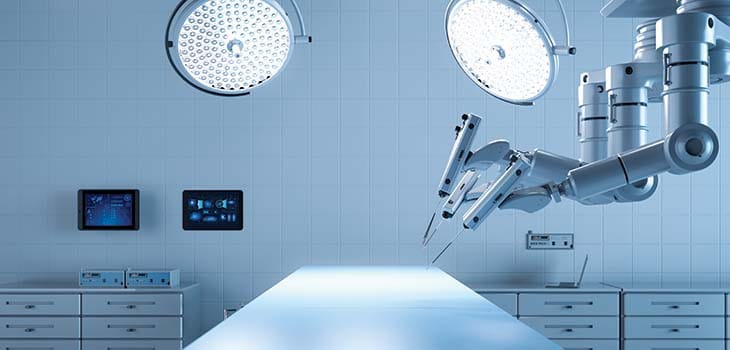Robotic Surgery Medical Malpractice: Who Is Responsible?
Robotic assisted surgeries have revolutionized the field of medicine, enabling surgeons to perform complex procedures with enhanced precision, minimal invasiveness, and faster recovery times for patients. With technological platforms like the da Vinci Surgical System now commonplace in operating rooms across Turkey and worldwide, robotic surgery is often seen as the gold standard in modern healthcare.
However, the integration of robotics into surgery does not eliminate the risk of complications or human error. It introduces new layers of complexity and potential liability. When robotic surgery goes wrong, patients may suffer serious injuries or worse. This raises a crucial legal question: Who is responsible for a robotic surgery error? Is it the surgeon who controlled the robot, the hospital that provided the equipment, or the manufacturer who designed the system?
At Oran Partners, Turkey’s only law firm focused exclusively on medical malpractice, we have extensive experience handling complex cases involving robotic surgical errors. In this article, we explore how these errors occur, who may be legally accountable, and what steps injured patients can take to protect their rights.
What Is Robotic Surgery?
Robotic surgery is a form of minimally invasive surgery in which doctors use robotic systems to conduct procedures with high accuracy. One of the most widely known systems is the da Vinci Surgical System, which allows surgeons to operate via small incisions while controlling robotic arms through a computer console.
These robotic systems are not autonomous they require a human surgeon to guide them. The surgeon’s hand movements are translated into precise movements of tiny instruments inside the patient’s body. Although the robot enhances dexterity and visualization, it does not remove the possibility of human error or system malfunction.
How Robotic Surgery Malpractice Happens
Despite the benefits, robotic surgery carries risks, especially when performed by undertrained surgeons or with poorly maintained equipment. Medical malpractice can arise from:
1. Surgeon Error
Robotic tools do not eliminate the need for surgical judgment and experience. Errors may include:
-
Lack of experience operating the robotic system
-
Inappropriate use of the robot for the patient’s condition
-
Poor decision-making, such as failing to convert to open surgery when complications arise
-
Mishandling instruments, leading to nerve damage or internal injury
2. Device Malfunction
Although robotic systems are high tech, they are still mechanical devices prone to error:
-
Mechanical failure of robotic arms
-
Software bugs or programming glitches
-
Electrical malfunctions causing unintentional movement or delay
Such issues can result in critical surgical errors, including perforation of organs or uncontrolled bleeding.
3. Training and Supervision Failures
Hospitals must ensure their staff are qualified to use robotic systems. Common institutional failures include:
-
Allowing unqualified or inadequately trained surgeons to use robotic tools
-
Lack of proper supervision for new practitioners
-
Failing to require credentialing or certification for robotic procedures
4. Maintenance Negligence
Hospitals are also responsible for:
-
Routine inspection and servicing of robotic systems
-
Prompt repairs and software updates
-
Maintaining sterile conditions for equipment
Neglecting these duties can contribute to preventable errors during surgery.
Who Can Be Held Liable for Robotic Surgery Malpractice?
Robotic surgery errors often involve multiple layers of responsibility. Depending on the circumstances, one or more of the following parties may be legally liable:
1. The Surgeon
Surgeons remain the central authority in the operating room. If the error stems from the surgeon’s poor decision-making, inexperience, or misuse of the robotic system, they can be held personally liable. Robotic technology is merely a tool; it is not a replacement for sound clinical judgment.
2. The Hospital or Medical Center
Hospitals have a legal duty to provide:
-
Proper training and credentialing programs
-
Regular equipment maintenance
-
Competent surgical staff
If a hospital failed in any of these duties, it may be liable for institutional negligence.
3. The Robot Manufacturer
If a defect in the robotic device caused the injury, such as a design flaw, software error, or manufacturing issue, the device manufacturer may be held liable under product liability laws. These cases are highly technical and may involve engineering evaluations and expert testimony to establish fault.
Common Injuries in Robotic Surgery Malpractice Claims
Medical malpractice claims involving robotic surgery may include a range of injuries, some of which are life-altering:
-
Perforation of internal organs
-
Uncontrolled or excessive bleeding
-
Nerve damage leading to loss of sensation or movement
-
Postoperative infection due to contaminated equipment
-
Scarring from unnecessary conversion to open surgery
-
Complications resulting in wrongful death
In many cases, the injuries are worsened by delays in recognizing complications or failure to take corrective action during the procedure.
How Oran Partners Can Help
At Oran Partners, we specialize in investigating and litigating robotic surgery malpractice cases. Our legal team offers a strategic and comprehensive approach to uncover all possible avenues of liability.
We Provide:
Detailed Investigation into surgical procedures and operating room protocols
Access to Expert Witnesses, including robotic surgery specialists and biomedical engineers
Legal Action against all responsible parties, including doctors, hospitals, and manufacturers
Support for International Clients who underwent surgery in Turkey’s medical tourism sector
We work relentlessly to secure full compensation for:
-
Medical expenses (past and future)
-
Lost income and reduced earning capacity
-
Pain and suffering
-
Expenses related to corrective surgeries
-
Emotional distress and loss of quality of life
What to Do If You Suspect Robotic Surgery Malpractice
If you or a loved one has experienced complications after robotic surgery, take the following steps to protect your rights:
Request Your Medical Records
Secure complete copies of hospital and surgical records, including any device logs or reports.
Document Your Injuries
Take photographs, keep a symptom diary, and record how the complications have affected your daily life.
Get a Second Medical Opinion
An independent review can help determine if the original surgery deviated from accepted medical standards.
Contact a Malpractice Lawyer Immediately
Timing is critical. Acting quickly ensures preservation of evidence and allows a lawyer to begin investigations before documents are lost or altered.
Take the First Step Toward Justice
At Oran Partners, we understand that victims of medical malpractice often feel overwhelmed, especially when technology is involved. You don’t have to navigate this alone.
Contact us today for a free, confidential consultation.
Let our experienced team of legal and medical professionals help you pursue justice and the compensation you rightfully deserve.













